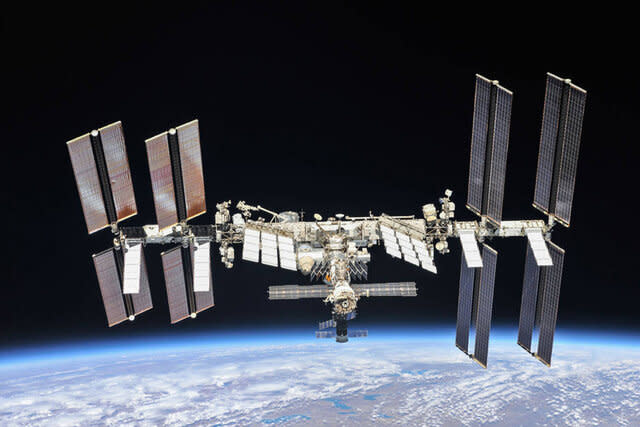Astronauts are manufacturing 'impossible' objects in space
- Oops!Something went wrong.Please try again later.
In the mid-1970s, a British science fiction series called Space: 1999 (now streaming on Peacock!) imagined a world in which humanity went to the Moon and never left. After sending astronauts to walk on the lunar surface, humanity built a scientific research station known as Moonbase Alpha. When stored nuclear waste at a lunar disposal site interacts with a mysterious form of magnetic radiation, it violently explodes.
The force of the blast was enough to break the Moon out of its orbit around the Earth and send it screaming off into deep space at incredibly high speeds. It’s so fast, in fact, that the 311 people living aboard Moonbase Alpha become stranded in deep space with no chance that they’ll ever get home. Worse, no matter what they encounter in space, there is no one coming to save or help them.
For the last couple of decades, humanity’s crewed space-based activities have been limited to a few hundred miles above the surface of the planet, in what's known as low-Earth orbit. That’s where the International Space Station lives. Humans living off planet rely almost entirely on materials hand delivered from Earth (water is recycled and doesn’t often have to be delivered), but if we want to press farther into the cosmos we’re going to need ways of creating useful materials in space.
RELATED: NASA considers building an oxygen pipeline on the Moon
An ongoing MIT experiment aboard the ISS is testing the waters of space-based manufacturing and making materials which would be impossible to create on Earth. A recent project from MIT’s Space Exploration Initiative sent a box to space, that is building objects in microgravity. They’re test parts which, if built on Earth, would collapse under their own weight from the gravity. On the International Space Station, however, not so much.
The device uses flexible silicone skin, not unlike a deflated balloon, which serves as a mold for whatever object you want to create. The skin is then filled with liquid resin, the same stuff you might find at your local craft store, which is sensitive to ultraviolet light. Once the skin is filled and the resin is in the right place, the box shines UV light at the liquid causing it to cure into a permanent shape. Then the skin can be peeled away, leaving the newly constructed object behind.

ISS Photo: NASA
MIT’s microgravity mini factory launched Nov. 23 on a 45-day mission. Once it’s finished, some of the parts built aboard the ISS will be returned to Earth for inspection and testing. If things go well, next steps will involve repeating the process in the vacuum of space.
On Earth, gravity is one of the biggest construction limitations we face. Bridges sag under their own weight over long distances, while every additional floor added to a skyscraper stresses every single floor beneath it. Engineers have to consider the weight of the building as well as any furniture, equipment, provisions, and people inside when choosing materials. Every inch of every construction project is an assault against gravity, which means there are just some things we can’t do on Earth.
RELATED: NASA will be saying goodbye to the ISS by 2030, but this end is really a beginning
These experiments in orbit pave the way for space-based manufacturing without the limitation of surface gravity. Suddenly, the boundaries of our ability might be considerably larger. We could feasibly build incredible megastructures larger than would ever be possible on Earth, and even the next class of spacecraft and space station might be constructed off planet.
In addition to ushering in an era of space-based manufacturing at scales heretofore impossible, scientists also imagine a future in which an astronaut could easily produce one-off objects as they are needed. If a distant crew needs a specific tool or replacement part, at least some of those could be easily manufactured in space rather than ordered in from Earth. That would prevent needing to prepare for every possible contingency or waiting through the incredibly long shipping times to receive something from Earth.
Of course, you don’t have to build a spacecraft if you’ve got an entire Moon. Get lost in the deep space adventures of Space: 1999, now streaming on Peacock!


